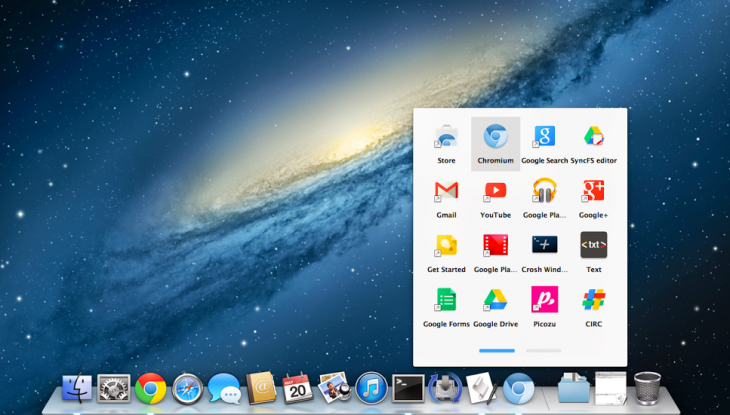
Over the last few months, Google has been working on porting its Chrome OS app launcher to Chrome for the desktop. The majority of the progress has been on Windows, but now it looks like Google is readying the OS X version, at least in Chromium, meaning Apple’s platform will likely get it next, followed by Linux.
The addition was first noted by developer and Google open-source Chromium evangelist François Beaufort. He points to a Chromium code review that changes how long titles for the Mac are being displayed.
Here’s how the feature looks on the Mac:
To see the feature for yourself, you’ll need to get Chromium for Mac. You can turn it on by using the –show-app-list switch.
Google has previously explained the feature is meant to be “the same experience as the app launcher on Chromebooks, but for other platforms.” If you’ve never used a Chromebook, the app launcher is a little window that lists all your apps in one place.
The app launcher will show up only after you install a Chrome packaged app from the Chrome Web Store. For those who don’t know, Chrome packaged apps are written in HTML, JavaScript, and CSS, but launch outside the browser, work offline by default, and access certain APIs not available to Web apps.
The app launcher first showed up in the Chrome dev channel on Windows back in February, though Google said Mac and Linux versions were coming soon. The feature then made it into Chrome 26 beta, again only on Windows, but didn’t make it into the final version 26 release of the browser in March, presumably because the Mac and Linux ports weren’t yet ready.
Chromium is the open source Web browser project that shares much of the same code as Google Chrome, and new features are often added there first. We expect it to show up on the Mac side soon, either at the same time or followed closely by the Linux flavor. Google is likely planning to push the app launcher for all three platforms with Chrome 28 or Chrome 29, both of which will be out in the next few months.
Top Image Credit: m4tik
Get the TNW newsletter
Get the most important tech news in your inbox each week.





